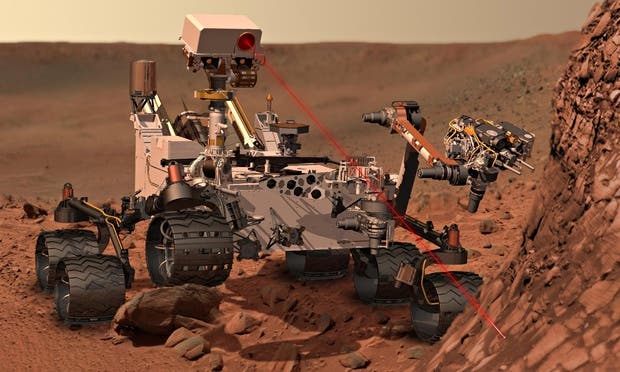NASA’s Mars Curiosity Rover has discovered a tenfold spike in methane, an organic chemical which may indicate that there actually was life on Mars – or still is. The rover detected this high concentration in the atmosphere, as well as in a rock-powder sample collected by the robotic laboratory’s drill.
Curiosity on the Red Planet
Curiosity has been on the Red Planet for about 20 months, during which it has made a number of spectacular discoveries. It has found evidence of water on Mars several times, it detected organic molecules and took some stunning pictures along the way. You could easily say that the mission was a success, but Curiosity is still reporting valuable information day after day – like the discovery of organic molecule concentration.
Before you get super excited, you should know that this doesn’t necessarily mean that life existed or exists on Mars – there are also non-biological causes for this methane concentration.
“This temporary increase in methane — sharply up and then back down — tells us there must be some relatively localized source,” said Sushil Atreya of the University of Michigan, Ann Arbor, a member of the Curiosity rover science team. “There are many possible sources, biological or non-biological, such as interaction of water and rock.”
The Sample Analysis at Mars (SAM) laboratory onboard Curiosity has been used 12 times since the Rover landed on Mars to test the atmosphere of the Red Planet. Most measurements averaged at 0.7 parts per million but four measurements averaged 10 times more methane. Curiosity also detected different Martian organic chemicals in powder drilled from a rock – the first definitive detection of organics in surface materials of Mars. It’s not yet clear if these organic substances were formed on Mars or were brought by meteorites.
Organic molecules

Methane discovered on Mars may indicate that the Red Planet once harbored microbial life. Image via Wired.
Organic molecules are typically made out of Carbon and Hydrogen atoms; for example, methane has one carbon atom and four hydrogen atoms. Curiosity’s discovery doesn’t necessarily indicate that Mars had or has microbes, but it does show a chemically active planet.
“We will keep working on the puzzles these findings present,” said John Grotzinger, Curiosity project scientist of the California Institute of Technology in Pasadena. Can we learn more about the active chemistry causing such fluctuations in the amount of methane in the atmosphere? Can we choose rock targets where identifiable organics have been preserved?”
Identifying which organic molecules are there is difficult in itself, but it’s further complicated by the presence of perchlorate minerals in Martian rocks and soils. When heated inside SAM, the perchlorates alter the structures of the organic compounds, so the identities of the Martian organics in the rock remain uncertain.
“This first confirmation of organic carbon in a rock on Mars holds much promise,” said Curiosity Participating Scientist Roger Summons of the Massachusetts Institute of Technology in Cambridge. “Organics are important because they can tell us about the chemical pathways by which they were formed and preserved. In turn, this is informative about Earth-Mars differences and whether or not particular environments represented by Gale Crater sedimentary rocks were more or less favorable for accumulation of organic materials. The challenge now is to find other rocks on Mount Sharp that might have different and more extensive inventories of organic compounds.”
The findings haven’t been officially published in a peer reviewed study, but the results were discussed on Tuesday at the American Geophysical Union’s convention in San Francisco. For copies of the new Science papers about Mars methane and water, visit:










